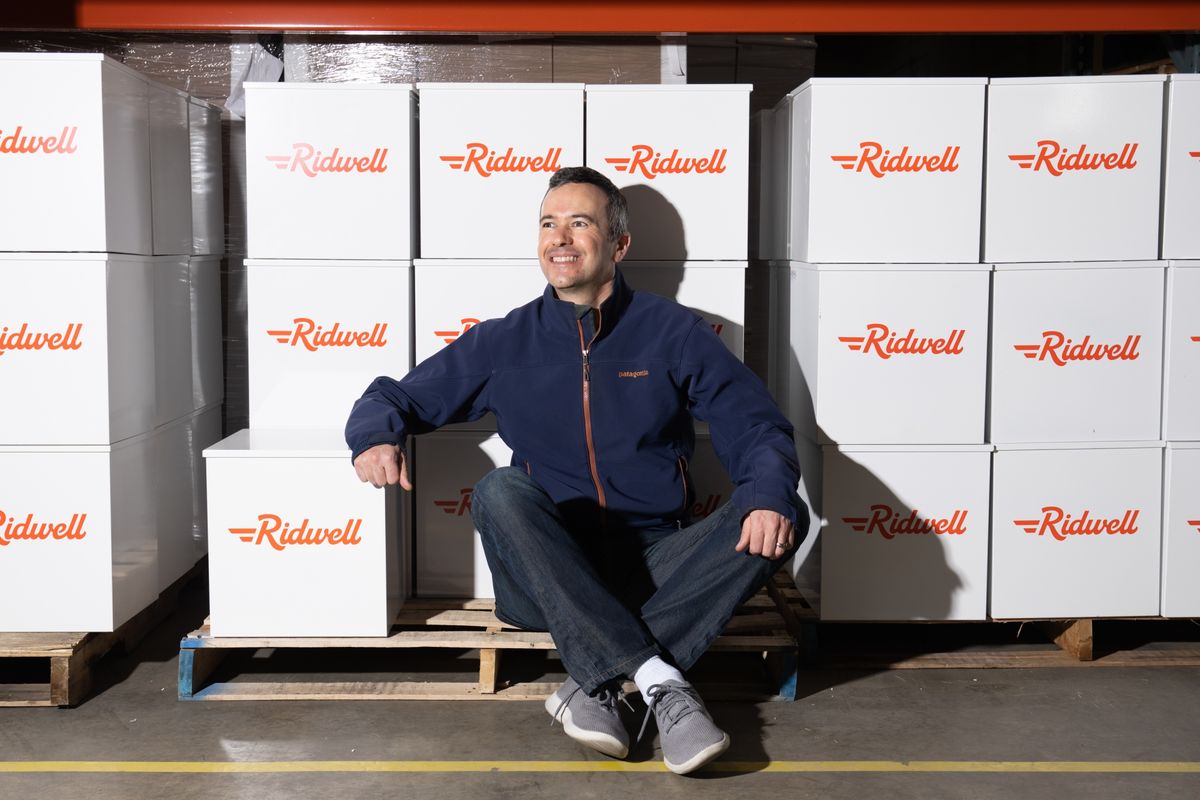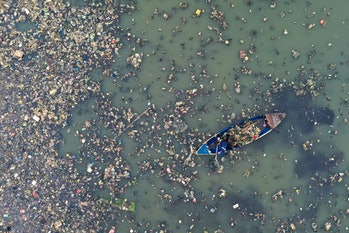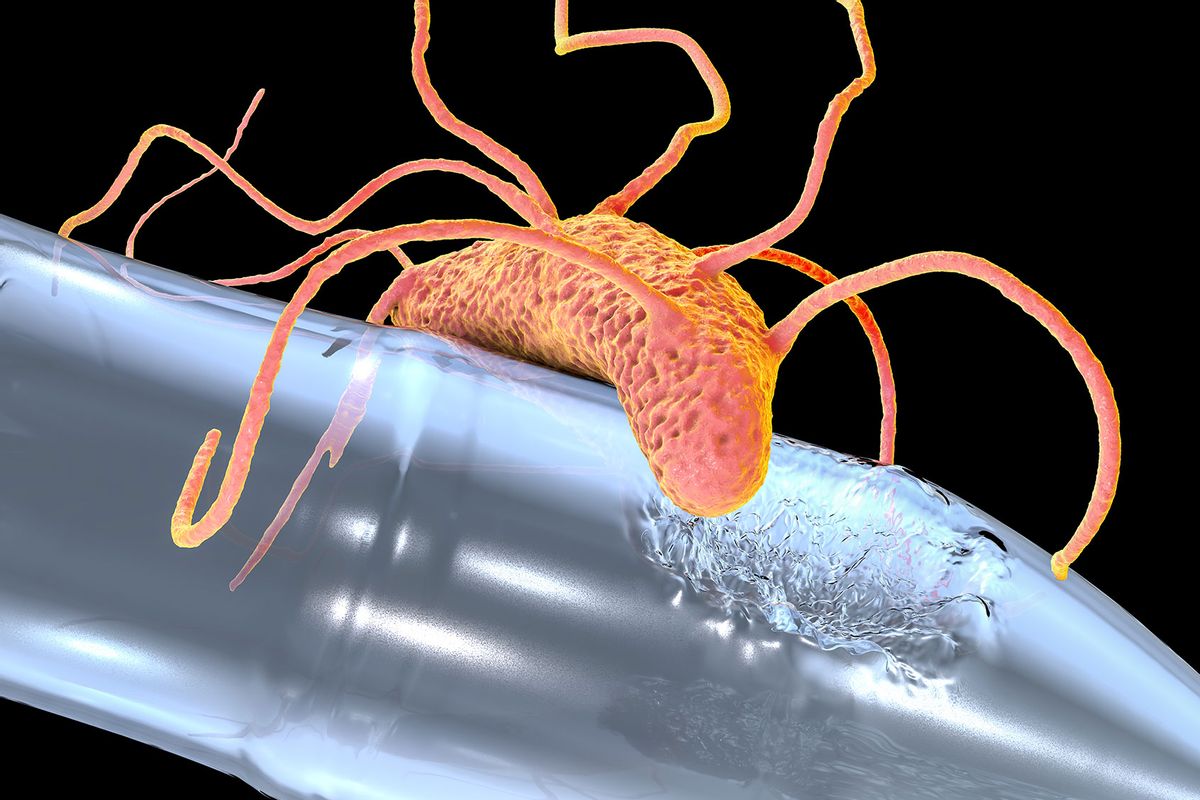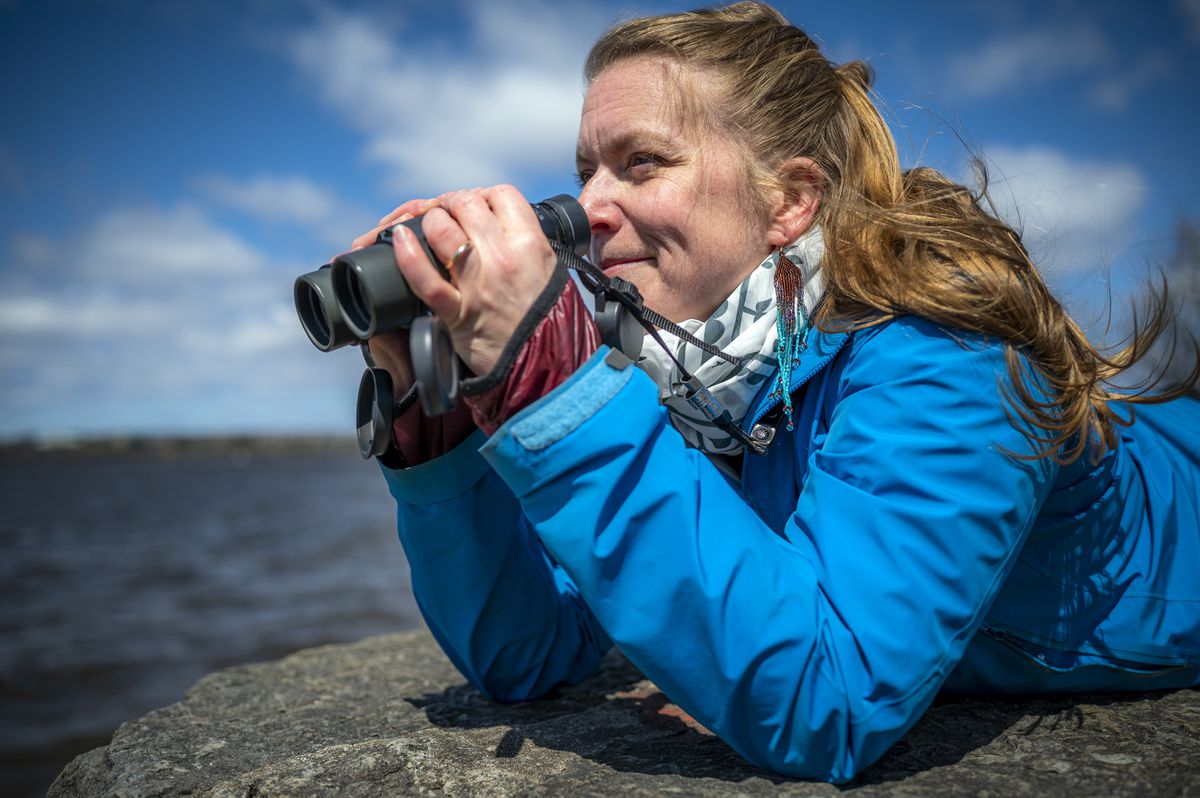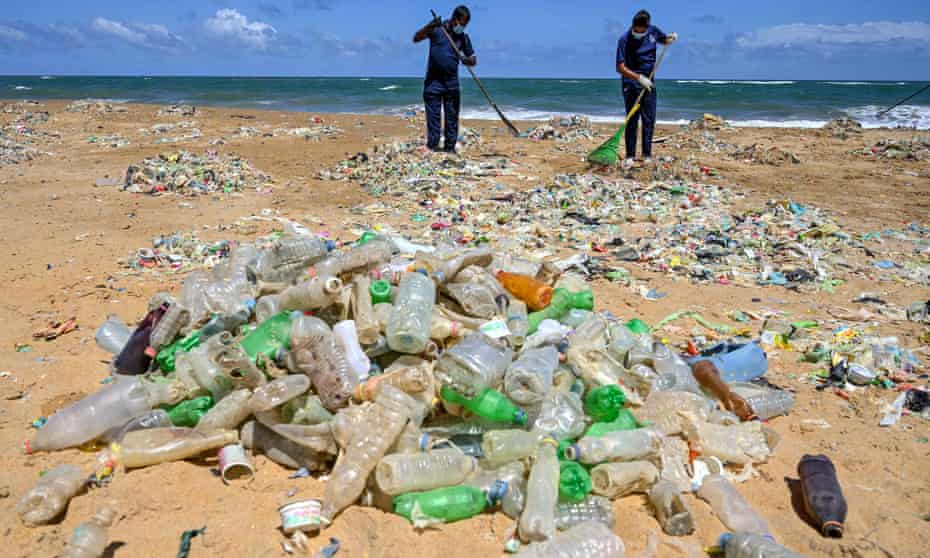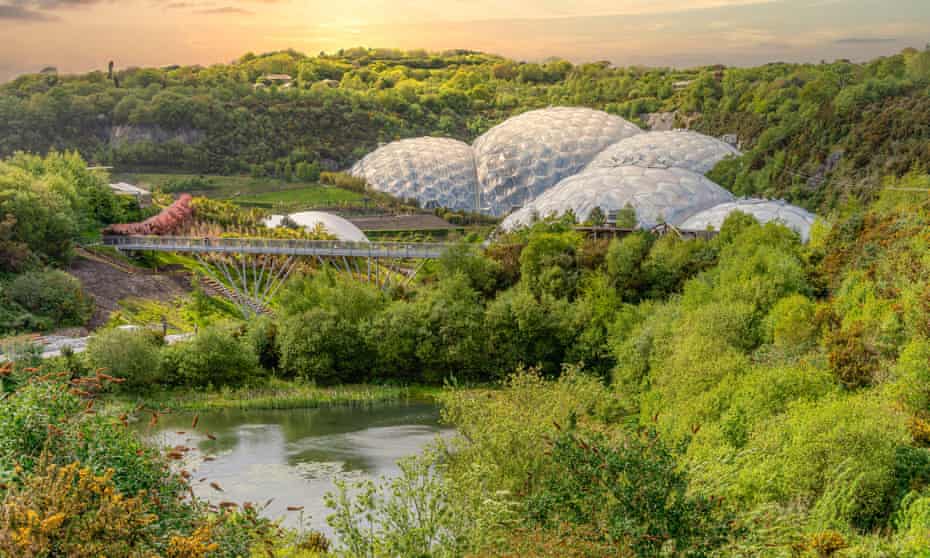Researchers hope the enzymes could create a truly circular system for the PET plastics that are still manufactured.
[Source Photos: rawpicel and rawpixel]
By
Author Archives: David Evans
This plastic-eating enzyme can break down garbage in days
Researchers hope the enzymes could create a truly circular system for the PET plastics that are still manufactured.
[Source Photos: rawpicel and rawpixel]
By
Recycling startup Ridwell makes household recycling easier
Jill Fransen considers herself a serious recycler, the kind of person who knows the difference between various plastics, takes care to sort them, and drives five miles from her home in Portland, Oregon’s, North Tabor neighborhood to drop off refuse at a recycling center.Over nearly a dozen years, Fransen’s routine was pretty well established. Then in late 2020, she heard about Ridwell, a subscription-based recycling service that had just been introduced in Portland. For about $12 per month, Ridwell would pick up items — stuff that many recycling programs won’t accept, like certain plastics and spent lightbulbs — right from one’s front porch, and take everything to its local plant to sort and redistribute for recycling or re-use.
Disease-causing parasites could be hitching a ride to the beach on microplastics
Typically when people hear about plastic pollution, they might envision seabirds with bellies full of trash or sea turtles with plastic straws in their noses. However, plastic pollution poses another threat that’s invisible to the eye and has important consequences for both human and animal health.Microplastics, tiny plastic particles present in many cosmetics, can form when larger materials, such as clothing or fishing nets, break down in the water. Microplastics are now widespread in the ocean and have been found in fish and shellfish, including those that people eat.As researchers studying how waterborne pathogens spread, we wanted to better understand what happens when microplastics and disease-causing pathogens end up in the same body of water. In our recent study published in the journal Scientific Reports, we found that pathogens from land can hitch a ride to the beach on microscopic pieces of plastic, providing a new way for germs to concentrate along coastlines and travel to the deep sea.Investigating how plastics and pathogens interactWe focused on three parasites that are common contaminants in marine water and seafood: the single-celled protozoans Toxoplasma gondii (Toxo), Cryptosporidium (Crypto), and Giardia. These parasites end up in waterways when feces from infected animals, and sometimes people, contaminate the environment.Crypto and Giardia cause gastrointestinal diseases that can be deadly in young children and immunocompromised individuals. Toxo can cause lifelong infections in people and can prove fatal for those with weak immune systems. Infection in pregnant women can also cause miscarriage or blindness and neurological disease in the baby. Toxo also infects a wide range of marine wildlife and kills endangered species, including southern sea otters, Hector’s dolphins, and Hawaiian monk seals.To test whether these parasites can stick to plastic surfaces, we first placed microplastic beads and fibers in beakers of seawater in our lab for two weeks. This step was important to induce the formation of a biofilm — a sticky layer of bacteria and gel-like substances that coats plastics when they enter fresh or marine waters. Researchers also call this sticky layer an eco-corona. We then added the parasites to the test bottles and counted how many became stuck on the microplastics or remained freely floating in the seawater over a seven-day period.[embedded content]Biofilms are vast communities of microbes that can form on almost any surface, including your teeth.We found that significant numbers of parasites were clinging to the microplastic, and these numbers were increasing over time. So many parasites were binding to the sticky biofilms that, gram for gram, plastic had two to three times more parasites than did seawater.Surprisingly, we found that microfibers (commonly from clothes and fishing nets) harbored a greater number of parasites than microbeads (commonly found in cosmetics). This result is important because microfibers are the most common type of microplastic found in marine waters, on coastal beaches, and even in seafood.Plastics could change ocean disease transmissionUnlike other pathogens that are commonly found in seawater, the pathogens we focused on are derived from terrestrial animal and human hosts. Their presence in marine environments is entirely due to fecal waste contamination that ends up in the sea. Our study shows that microplastics could also serve as transport systems for these parasites.These pathogens cannot replicate in the sea. Hitching a ride on plastics into marine environments, however, could fundamentally alter how these pathogens move around in marine waters. We believe that microplastics that float along the surface could potentially travel long distances, spreading pathogens far from their original sources on land and bringing them to regions they would not otherwise be able to reach.On the other hand, plastics that sink will concentrate pathogens on the sea bottom, where filter-feeding animals like clams, mussels, oysters, abalone, and other shellfish live. A sticky biofilm layer can camouflage synthetic plastics in seawater, and animals that typically eat dead organic material may unintentionally ingest them. Future experiments will test whether live oysters placed in tanks with and without plastics end up ingesting more pathogens.The biofilms that form on microplastics can help pathogens spread through the sea.Emma ZhangA-One Health problemOne Health is an approach to research, policy, and veterinary and human medicine that emphasizes the close connection between animal, human and environmental health. While it may seem that plastic pollution affects only animals in the ocean, it can ultimately have consequences on human health.Our project was conducted by a multidisciplinary team of experts, ranging from microplastics researchers and parasitologists to shellfish biologists and epidemiologists. This study highlights the importance of collaboration across human, animal, and environmental disciplines to address a challenging problem affecting our shared marine environment.Our hope is that a better understanding of how microplastics can move disease-causing pathogens in new ways will encourage others to think twice before reaching for that plastic straw or polyester T-shirt.This article was originally published on The Conversation by Emma Zhang and Karen Shapiro at University of California, Davis. Read the original article here.
Disease-causing parasites could be hitching a ride to the beach on microplastics
Typically when people hear about plastic pollution, they might envision seabirds with bellies full of trash or sea turtles with plastic straws in their noses. However, plastic pollution poses another threat that’s invisible to the eye and has important consequences for both human and animal health.Microplastics, tiny plastic particles present in many cosmetics, can form when larger materials, such as clothing or fishing nets, break down in the water. Microplastics are now widespread in the ocean and have been found in fish and shellfish, including those that people eat.As researchers studying how waterborne pathogens spread, we wanted to better understand what happens when microplastics and disease-causing pathogens end up in the same body of water. In our recent study published in the journal Scientific Reports, we found that pathogens from land can hitch a ride to the beach on microscopic pieces of plastic, providing a new way for germs to concentrate along coastlines and travel to the deep sea.Investigating how plastics and pathogens interactWe focused on three parasites that are common contaminants in marine water and seafood: the single-celled protozoans Toxoplasma gondii (Toxo), Cryptosporidium (Crypto), and Giardia. These parasites end up in waterways when feces from infected animals, and sometimes people, contaminate the environment.Crypto and Giardia cause gastrointestinal diseases that can be deadly in young children and immunocompromised individuals. Toxo can cause lifelong infections in people and can prove fatal for those with weak immune systems. Infection in pregnant women can also cause miscarriage or blindness and neurological disease in the baby. Toxo also infects a wide range of marine wildlife and kills endangered species, including southern sea otters, Hector’s dolphins, and Hawaiian monk seals.To test whether these parasites can stick to plastic surfaces, we first placed microplastic beads and fibers in beakers of seawater in our lab for two weeks. This step was important to induce the formation of a biofilm — a sticky layer of bacteria and gel-like substances that coats plastics when they enter fresh or marine waters. Researchers also call this sticky layer an eco-corona. We then added the parasites to the test bottles and counted how many became stuck on the microplastics or remained freely floating in the seawater over a seven-day period.[embedded content]Biofilms are vast communities of microbes that can form on almost any surface, including your teeth.We found that significant numbers of parasites were clinging to the microplastic, and these numbers were increasing over time. So many parasites were binding to the sticky biofilms that, gram for gram, plastic had two to three times more parasites than did seawater.Surprisingly, we found that microfibers (commonly from clothes and fishing nets) harbored a greater number of parasites than microbeads (commonly found in cosmetics). This result is important because microfibers are the most common type of microplastic found in marine waters, on coastal beaches, and even in seafood.Plastics could change ocean disease transmissionUnlike other pathogens that are commonly found in seawater, the pathogens we focused on are derived from terrestrial animal and human hosts. Their presence in marine environments is entirely due to fecal waste contamination that ends up in the sea. Our study shows that microplastics could also serve as transport systems for these parasites.These pathogens cannot replicate in the sea. Hitching a ride on plastics into marine environments, however, could fundamentally alter how these pathogens move around in marine waters. We believe that microplastics that float along the surface could potentially travel long distances, spreading pathogens far from their original sources on land and bringing them to regions they would not otherwise be able to reach.On the other hand, plastics that sink will concentrate pathogens on the sea bottom, where filter-feeding animals like clams, mussels, oysters, abalone, and other shellfish live. A sticky biofilm layer can camouflage synthetic plastics in seawater, and animals that typically eat dead organic material may unintentionally ingest them. Future experiments will test whether live oysters placed in tanks with and without plastics end up ingesting more pathogens.The biofilms that form on microplastics can help pathogens spread through the sea.Emma ZhangA-One Health problemOne Health is an approach to research, policy, and veterinary and human medicine that emphasizes the close connection between animal, human and environmental health. While it may seem that plastic pollution affects only animals in the ocean, it can ultimately have consequences on human health.Our project was conducted by a multidisciplinary team of experts, ranging from microplastics researchers and parasitologists to shellfish biologists and epidemiologists. This study highlights the importance of collaboration across human, animal, and environmental disciplines to address a challenging problem affecting our shared marine environment.Our hope is that a better understanding of how microplastics can move disease-causing pathogens in new ways will encourage others to think twice before reaching for that plastic straw or polyester T-shirt.This article was originally published on The Conversation by Emma Zhang and Karen Shapiro at University of California, Davis. Read the original article here.
The race to design a bacteria that can eat plastic
Though its effects are not always visible to the naked eye, plastic is choking life on Earth. Birds are dying from plastic accumulating their intestines. Animals are full of microplastics, and humans are unintentionally eating a credit card’s worth of plastic every week, which is seeping into our bloodstream. And the ocean is becoming an open plastic dump to the extent that microplastic particles may outnumber zooplankton.
These harrowing scenes could come to define our planet’s future. The process for manufacturing plastic exacerbates climate change, and the prevalence of plastic in the environment has led to heartbreaking sights like sea turtles with straws stuck up their noses. Yet because plastic is designed to be durable and lasting, scientists who dream of permanently removing it from our environment have often despaired of solutions.
One oft-floated pipe dream as to how to alleviate plastic pollution: can we breed something that will consume it?
RELATED: How plastic pollution threatens our health, food systems, and civilization itself
A new study suggests that an enzyme which targets polyethylene terephthalate (PET) — a widely-used polymer found in a majority of consumer packaging products that comprises 12 percent of all global waste — could make that scientific dream, which is also planetary necessity, into a reality.
The key ingredient was a natural enzyme known as PETase, according to the paper published in the scientific journal Nature. Using a machine learning model, scientists at the University of Texas at Austin’s Cockrell School of Engineering and College of Natural Sciences figured out what mutations would cause the enzyme to be able to quickly break down the targeted types of plastic waste.
“Collectively, our results demonstrate a viable route for enzymatic plastic recycling at the industrial scale,” the researchers conclude in their paper.
Want more health and science stories in your inbox? Subscribe to Salon’s weekly newsletter The Vulgar Scientist.
“Enzyme scale-up has been a well-explored problem in many industries,” Hal Alper, professor in the McKetta Department of Chemical Engineering at UT Austin, told Salon by email when asked how long it would take for this enzyme to be available on a wide scale. “Therefore, we feel that this part of the problem is easily achievable in a short period of time. The more challenging aspect will be implementing enzyme degradation on a large scale with mixed stream plastics.” (Mixed stream plastics are all non-bottle plastics collected from the waste stream, or the entire life cycle of the garbage produced in a community.)
This was not the first effort to find biological means of solving the plastic pollution problem. In March 2016, Japanese researchers found a bacteria known as Ideonella sakaiensis that, they marveled, would “eat” the plastic outside of an Osaka bottle factory until it turned into sludge.
Alper added, when asked about how the new team’s research built on previous efforts to address plastic pollution, “We utilized the enzymes that have been found in bacteria evolved to use PET. By starting with this enzyme as a scaffold, we applied machine learning techniques to substantially improve upon function.”
As Alper’s reply indicates, this was not the first effort to find biological means of solving the plastic pollution problem. It all began, as much of scientific history does, with a random crucial discovery. In March 2016, Japanese researchers found a bacteria known as Ideonella sakaiensis that, they marveled, would “eat” the plastic outside of an Osaka bottle factory until it turned into sludge. “The new species, Ideonella sakaiensis, breaks down the plastic by using two enzymes to hydrolyze PET and a primary reaction intermediate, eventually yielding basic building blocks for growth,” the scientists wrote.
Plastic-eating bacteria was later discovered in Oregon and Germany by subsequent researchers, demonstrating to scientists that there could be a biological solution to the plastic problem. By 2020, scientists at the University of Portsmouth had managed to alter the PETase enzyme to create a supposed “cocktail” that could digest plastic up to six times faster than normal. In the abstract of their paper, the researchers singled out the discovery of the Ideonella sakaiensis as vital to their research, as well as addressing an international catastrophe.
“Plastics pollution represents a global environmental crisis,” the authors wrote. “In response, microbes are evolving the capacity to utilize synthetic polymers as carbon and energy sources.”
Last year, scientists at the University of Edinburgh announced that E. coli, a common bacteria, could be used to convert PET into vanillin, the primary component of extracted vanilla beans. They even suggested that the vanillin might be able to be safely consumed by humans, although they emphasized that further experiments would be required.
Joanna Sadler, a biotechnology professor at the University of Edinburgh who was not involved in the most recent study but was involved in the E. coli study, seemed hopeful about the developments in the latest paper. Sadler characterized the new enzyme as the “fastest enzyme reported to date” in terms of the speed at which it can “depolymerise” different plastic substrates.
“This makes it a very promising technological development in the field, and demonstrates the ‘evolvability’ of this enzyme,” Sadler said.
Alper, not surprisingly, echoed Sadler’s hopeful tone.
“Our enzyme is up to 30x more efficient than reported enzymes and operates at lower temperatures and thus saves on energy input and improves the ease of downstream processing,” Alper wrote to Salon.
For more Salon articles on plastic pollution:
The race to design a bacteria that can eat plastic
Though its effects are not always visible to the naked eye, plastic is choking life on Earth. Birds are dying from plastic accumulating their intestines. Animals are full of microplastics, and humans are unintentionally eating a credit card’s worth of plastic every week, which is seeping into our bloodstream. And the ocean is becoming an open plastic dump to the extent that microplastic particles may outnumber zooplankton.
These harrowing scenes could come to define our planet’s future. The process for manufacturing plastic exacerbates climate change, and the prevalence of plastic in the environment has led to heartbreaking sights like sea turtles with straws stuck up their noses. Yet because plastic is designed to be durable and lasting, scientists who dream of permanently removing it from our environment have often despaired of solutions.
One oft-floated pipe dream as to how to alleviate plastic pollution: can we breed something that will consume it?
RELATED: How plastic pollution threatens our health, food systems, and civilization itself
A new study suggests that an enzyme which targets polyethylene terephthalate (PET) — a widely-used polymer found in a majority of consumer packaging products that comprises 12 percent of all global waste — could make that scientific dream, which is also planetary necessity, into a reality.
The key ingredient was a natural enzyme known as PETase, according to the paper published in the scientific journal Nature. Using a machine learning model, scientists at the University of Texas at Austin’s Cockrell School of Engineering and College of Natural Sciences figured out what mutations would cause the enzyme to be able to quickly break down the targeted types of plastic waste.
“Collectively, our results demonstrate a viable route for enzymatic plastic recycling at the industrial scale,” the researchers conclude in their paper.
Want more health and science stories in your inbox? Subscribe to Salon’s weekly newsletter The Vulgar Scientist.
“Enzyme scale-up has been a well-explored problem in many industries,” Hal Alper, professor in the McKetta Department of Chemical Engineering at UT Austin, told Salon by email when asked how long it would take for this enzyme to be available on a wide scale. “Therefore, we feel that this part of the problem is easily achievable in a short period of time. The more challenging aspect will be implementing enzyme degradation on a large scale with mixed stream plastics.” (Mixed stream plastics are all non-bottle plastics collected from the waste stream, or the entire life cycle of the garbage produced in a community.)
This was not the first effort to find biological means of solving the plastic pollution problem. In March 2016, Japanese researchers found a bacteria known as Ideonella sakaiensis that, they marveled, would “eat” the plastic outside of an Osaka bottle factory until it turned into sludge.
Alper added, when asked about how the new team’s research built on previous efforts to address plastic pollution, “We utilized the enzymes that have been found in bacteria evolved to use PET. By starting with this enzyme as a scaffold, we applied machine learning techniques to substantially improve upon function.”
As Alper’s reply indicates, this was not the first effort to find biological means of solving the plastic pollution problem. It all began, as much of scientific history does, with a random crucial discovery. In March 2016, Japanese researchers found a bacteria known as Ideonella sakaiensis that, they marveled, would “eat” the plastic outside of an Osaka bottle factory until it turned into sludge. “The new species, Ideonella sakaiensis, breaks down the plastic by using two enzymes to hydrolyze PET and a primary reaction intermediate, eventually yielding basic building blocks for growth,” the scientists wrote.
Plastic-eating bacteria was later discovered in Oregon and Germany by subsequent researchers, demonstrating to scientists that there could be a biological solution to the plastic problem. By 2020, scientists at the University of Portsmouth had managed to alter the PETase enzyme to create a supposed “cocktail” that could digest plastic up to six times faster than normal. In the abstract of their paper, the researchers singled out the discovery of the Ideonella sakaiensis as vital to their research, as well as addressing an international catastrophe.
“Plastics pollution represents a global environmental crisis,” the authors wrote. “In response, microbes are evolving the capacity to utilize synthetic polymers as carbon and energy sources.”
Last year, scientists at the University of Edinburgh announced that E. coli, a common bacteria, could be used to convert PET into vanillin, the primary component of extracted vanilla beans. They even suggested that the vanillin might be able to be safely consumed by humans, although they emphasized that further experiments would be required.
Joanna Sadler, a biotechnology professor at the University of Edinburgh who was not involved in the most recent study but was involved in the E. coli study, seemed hopeful about the developments in the latest paper. Sadler characterized the new enzyme as the “fastest enzyme reported to date” in terms of the speed at which it can “depolymerise” different plastic substrates.
“This makes it a very promising technological development in the field, and demonstrates the ‘evolvability’ of this enzyme,” Sadler said.
Alper, not surprisingly, echoed Sadler’s hopeful tone.
“Our enzyme is up to 30x more efficient than reported enzymes and operates at lower temperatures and thus saves on energy input and improves the ease of downstream processing,” Alper wrote to Salon.
For more Salon articles on plastic pollution:
Plastic pollution accelerating the consequences of climate change in Canada’s Arctic, according to new research
As Canada’s Arctic continues to accumulate plastic, and climate change takes its toll on northern environments and communities, experts have evidence to suggest each threat is exacerbating the other, according to a recent paper published in Nature this month.As climate change affects temperatures and water patterns, says the review, plastic has become a more common sight within Arctic waters, snow, animals, and even ice drilled from some of the north’s most isolated glaciers. In return, these plastics contribute to an environment that absorbs more heat, encouraging changes in Earth’s climate that disproportionately impact the Arctic — which has warmed at a rate two to three times faster than the rest of the world in the past 50 years. However, given the limited amount of data available on the Arctic’s plastic build-up, experts say the intensity of the interplay between the two can’t be determined just yet.Climate change’s role in the movement of plastic affects the Arctic in unique ways, said Dr. Jennifer Provencher, co-author of the paper, and a conservation biologist who studies the impacts of plastic on marine wildlife. As climate change increases surface-water temperatures, winds and water patterns shift, bringing plastics from farther south into even the most remote parts of the Arctic. This has caused microplastics — particularly those that have been evaporated into the atmosphere through the water cycle in other parts of the world — to be deposited into Arctic sea ice.Dr. Provencher pointed to a study conducted in 2019, during which a team of American scientists drilled 18 ice cores from Lancaster Sound in Canada’s Arctic and found an abundance of plastic within them, indicating microplastic infiltration in some of the north’s most isolated areas. As elevated temperatures encourage the rapid melting of this ice, said Dr. Provencher, those with significant deposits will unleash a large amount of plastic into the Arctic.“Currently, we have very little trend data on plastics accumulation, because we had almost no samples 10 years ago and nothing to build those trends from,” she said. “What I can say is that for most of the environmental samples that have been taken since, we find microplastics.”Dr. Provencher and her co-authors reviewed a number of ways in which plastics have contributed to a similar uptick in the climate’s effects on the north, including how they could negatively impact key Arctic carbon sinks. Plastic particles’ impacts on the diets and habitats of phytoplankton communities could affect how much carbon these marine algae are able to absorb from the atmosphere. Microplastics also have the potential to darken sea ice and glacial snow, the paper said, interrupting their ability to reflect sunlight away from the Earth and help keep it cool.This cooling system is integral to a stable Arctic environment, and its disturbance is a big reason why the far north is heating up so much faster than the rest of the planet, said Dr. Chris Derksen, a research scientist at Environment and Climate Change Canada who specializes in the cryosphere (the term for the frozen-water layer of the Earth’s surface). As rising temperatures melt snow and ice and leave behind heat-absorbent open sea water, the melting cycle is sped up, which disproportionately affects the Arctic.“We call it a positive feedback loop, where a change in one direction reinforces and increases the severity of that change,” said Dr. Derksen. “So as we lose snow and sea ice because the planet is warming, that contributes to further warming, which causes us to lose more snow and sea ice … and the cycle continues.”The more plastic there is in the Arctic and around the world, the harsher the consequences are for the north — especially considering the chemical breakdown of plastics itself emits greenhouse gases. A study published in PLOS One in 2018 by Dr. Sarah-Jeanne Royer, an oceanographer at the Scripps Institute of Oceanography in San Diego, revealed that many of the plastics that make up the bulk of plastic pollution worldwide release methane and ethylene when degrading under sunlight — the former being 25 times more potent at trapping heat in the atmosphere than carbon dioxide.“The direct consequences of the gases emitted from plastic solely in the Arctic might not be significant,” she said, “but if we are looking at the effect of plastics emissions on worldwide climate change, and consider how climate change affects the Arctic so much more than much of the world, then that is a problem.”However, just how much plastic contributes to climate change — and vice versa — has yet to be measured. Experts are still in the process of quantifying just how much plastic there is in the Arctic, said Dr. Royer, in order to understand the true extent of the effects on Earth’s most vulnerable ecosystems.Researchers include the intergovernmental Arctic Council, with whom Dr. Provencher has worked since 2020 on their Arctic Monitoring & Assessment Programme (AMAP). The international group aims to mitigate plastics and climate change in the Arctic through collaboration, and is the first project of its scale to tackle plastics in 11 “compartments,” or spheres, of the Arctic ecosystem — from air, to soil, to ice and snow, to animals. However, its status as a multi-country initiative leaves it at risk of interruption as the result of geopolitical conflict, including current council chair Russia’s recent aggression in Ukraine, which pushed the council to suspend all meetings until further notice last month.“The good news is that there is a lot we can focus on at the domestic level,” she said. “What’s on pause is the international collaboration aspect of the work, but the international goals that we set are still there, and there’s no reason why we can’t work towards them.”One such program is the Northern Contaminants Program (NCP), a funding program established in 1991 by the federal government to examine the risk that elevated levels of contaminants in wildlife species pose to northern Indigenous peoples’ traditional diets. Since then, NCP has funded a number of plastic-related projects, emphasizing community-based monitoring that uses the concerns of local populations as its baseline for research focus.“It’s important that we co-develop the questions together [with Indigenous peoples],” said Dr. Provencher, “because in the end, it’s northern communities who feel the impacts of Arctic microplastic pollution the most.”What is important for now is that approaches to mitigating plastic and climate change in the Arctic continue to account for one another, said Dr. Derksen, as neither threat exists in a vacuum.“When we start to solve some of these problems, it’s not helpful to try and solve them in very carved-out, isolated areas,” he said. “But if we can understand the interconnected nature between them, then maybe it can spur us to try to solve them in a more comprehensive way, as opposed to just sort of throwing individual darts.”Interested in more stories about climate change? Sign up for the Globe Climate newsletter and read more from our series on climate change innovation and adaption.
California investigating fossil fuel companies for deceiving public on hazards of plastic
California accuses ExxonMobil of deceiving public on hazards of plastics Attorney general has launched an inquiry into fossil fuel companies’ role in causing global environmental crisis California’s attorney general has subpoenaed ExxonMobil as part of what he called a first-of-its-kind broader investigation into the petroleum industry for its alleged role in causing a global plastic …
Eden Project installs plastic grass to stop children getting muddy
Eden Project installs plastic grass to stop children getting muddy Campaigners say move by Cornish garden is latest example of epidemic of plastic being laid across UK The Eden Project in Cornwall has installed plastic grass in a children’s play area to stop them getting muddy. The garden is one of a number of organisations …
Continue reading “Eden Project installs plastic grass to stop children getting muddy”


